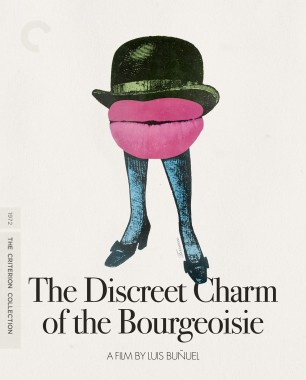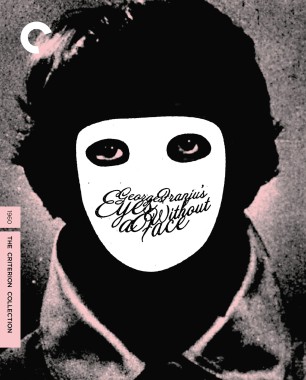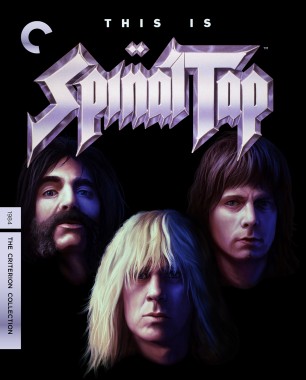
Edgar Wright’s Top10
Award-winning British director Edgar Wright is best known in the United States for his feature films Shaun of the Dead, Hot Fuzz, and Scott Pilgrim vs. the World; he also directed the UK hit television series Spaced. For his Criterion Top 10 (plus one), Wright expounds upon his love for De Palma, Buñuel, Gilliam, the Monkees, and more.
-
1
Brian De Palma
Blow Out
I have heard people call themselves Brian De Palma apologists. I am proud to say that I am a huge fan without any caveats. There’s a reason that, back in the seventies, fellow movie brats Spielberg, Lucas, and Scorsese would defer to De Palma as “the filmmaker.” When on form, his work is something to behold. Even the lesser works of De Palma contain flashes of genius, while the best of his movies rank as pure cinema. Blow Out is certainly one of De Palma’s finest. There’s not a wasted shot, not even a wasted corner of frame. In the telling of this audiovisual thriller, De Palma uses Steadicam work, split screens, split diopter shots, and complex optical effects to utterly exciting but never overly flashy effect. Some directors are great storytellers without their presence being felt, but De Palma, much like his cinematic hero Alfred Hitchcock, is a master manipulator of both his medium and his audience. He plays us like an instrument, maneuvers us like puppets, and frequently makes us look where we’d rather not. Blow Out begins with De Palma turning the camera on himself and criticisms against him, then ends with one of the crueller, blacker chapters in cinema.
The interview on the disc with De Palma and Noah Baumbach is a must-see too; great to hear him talk about Hitchcock, Antonioni, and Coppola and their influence on this film. Filmmakers and film students will be also fascinated to know that Brian thinks coverage is a dirty word. This is a tremendous piece of work that I am very glad Criterion has given the royal treatment.
-
2
Terry Gilliam
Brazil
When I first saw Brazil in the late ’80s, it hit me like a truck. It was such a powerful, bold vision, so joyous in its escapism and so crushing in its ultimate nihilism, that it left my teenage mind in tatters. I wasn’t quite sure what I’d watched but knew it was unlike anything I’d seen before. The impressive (and somewhat sad) fact is that, decades later, I still haven’t seen anything quite like Brazil. It escaped from Terry Gilliam’s brain with such velocity that its power even today is undeniable. I showed it at the New Beverly Cinema in Los Angeles in January of this year, and it still confounded me.
I asked Terry Gilliam if he would write a quick intro for me to read out before the screening. This was it:
Brazil was made by a bunch of young people who didn’t know any better. They are older and wiser now, but it seems America isn’t. It’s a pity that George W. and Dick Cheney aren’t still running the show. I was tempted to sue them for the illegal and unauthorized remake of Brazil. Just think . . . more people are living my movie than ever went to see it.
-
3
Luis Buñuel
The Discreet Charm of the Bourgeoisie
As I was a young film fan growing up in a VCR-less household in rural England, my access to international cinema was limited to whatever was playing on the (then) four channels of network television. Which basically meant that Sergio Leone’s Dollars trilogy and Jacques Tati were some of the only European films I saw until I was in my late teens.
During a brief art college stint, my eyes were opened as I was exposed to surrealism. First Luis Buñuel’s Un chien Andalou and L’age d’or, but then later, my favorite film of his, the 1972 masterpiece The Discreet Charm of the Bourgeoisie. Dipping into the history of cinema is an exciting yet overwhelming task for some. When appreciating older works, I like to contextualize by tracing back to them from their influences. So if the work of Buñuel ever seems daunting, know this: he directly influenced Monty Python, and John Landis was inspired by this movie for a classic shock sequence in An American Werewolf in London. I know that has now inspired some of you to watch the film immediately. Buñuel has a fiendishly prankish sense of humor to go along with his endless smarts. If you have never watched a film of his, this is a good place to start.
-
4
Georges Franju
Eyes Without a Face
I became obsessed with horror at a very early age. Knowing this, my dad would often recall the greatest horror film he ever saw. It was black and white, it was French, and it was, in his words, “really, really gory.” He would tell me it was about a mad surgeon who tries to restore the face of his daughter, disfigured in a car accident, by mutilating young women and stealing their fair skin. And he would go on and on about how great it was, how scary it was, and how I would simply have to see it. But . . .
He could not recall the name of the film. I tried to cross-reference with horror guidebooks in the library, but without the invention of the Internet and plot keywords, I was left stumped for a long time. Years later, I saw Eyes Without a Face and called my dad immediately. I told him the crucial fact he’d been missing, the actual name of the greatest horror film he had ever seen. I then agreed with him that, yes, it was a quite extraordinary film.
-
5
Bob Rafelson
Head
Head is my favorite film that stars a musical artist, by some degree. And yes, that includes the brilliant A Hard Day’s Night. However, the Monkees’ triumph of a movie is a Pyrrhic victory, because Head accelerated their demise, as it sees Dolenz, Nesmith, Tork, and Jones push the self-destruct button. Directed by Bob Rafelson and cowritten by Jack Nicholson, the movie shows the Monkees tearing down their wholesome network-TV, pre–Fab Four image with wild style. Much has been read into this stream-of-consciousness movie, with its overlapping dream sequences, surreal song numbers, and drug-influenced chaos. The simplest way of describing it is this: the Monkees are sick of being on their network show and attempt to break out of the studio lot, literally and figuratively. There are several scenes where the Monkees are trapped in a box, a live number where they are revealed to be plastic mannequins, and bookending sequences where the members commit suicide.
So basically, the Monkees want out.
There have been some claims by the Monkees since the film came out that this message was projected onto it by Rafelson and Nicholson, but the script was clearly born of a very real frustration with their image. The movie bombed in 1968, because not many Monkees fans wanted to know that their idols had painted-on smiles. What remains is a gem of rock music cinema, with great songs and images throughout. Plus, as depressing as the theme of entrapment is, it’s frequently very funny.
I got to interview Dolenz about it at a New Beverly Q&A once. A young audience member quizzed him on the deeper themes, and he just replied, “Man, I was twenty-three . . .”
-
6
Michael Powell
Peeping Tom
I edited Scott Pilgrim on Charlotte Street in London. Two key Peeping Tom locations were outside the door of my workplace: the passageway where a doomed prostitute picks up Mark Lewis in the opening sequence, and the newsagent above which he takes adult photographs.
I had seen Peeping Tom two or three times before but finally watched it on the big screen when I was working in its locale. Michael Powell’s film had always haunted and intrigued me, but seeing the streets that I traversed every day on-screen from fifty years earlier had a darkly powerful effect on me. Even though the film is a work of fiction, my walk home would never be the same again. I would think about Peeping Tom every day, and beyond that, the ghosts of Fitzrovia: dark doings behind closed doors, grim secrets at the tops of narrow staircases.
-
7
Wes Anderson
Rushmore
This film and the Criterion label are synonymous for me. Its beautiful cover art and immaculate menus seem to fit perfectly with its lead character; it’s almost as if Max Fischer himself were unsatisfied with the original vanilla DVD release from Disney and produced a handcrafted one instead. The actual film is a brilliant gem by Wes Anderson, and one that still shines brightly today. Just in the past year, we’ve seen a number of films that walk in the shadow of this one. Of course, it wouldn’t have inspired so many movies, music videos, commercials, and TV shows if it wasn’t such a distinctive effort.
This is an undeniable cult classic, one that every Max Fischer on the planet has on their shelf.
-
8
Jean-Pierre Melville
Le samouraï
Le samouraï is a film I return to again and again. Like with any minimalist cinema, the less it states, the more you want to discover.
Jean Pierre Melville’s film has been hugely influential, from Walter Hill’s The Driver through Luc Besson’s Leon: The Professional right up to this year’s Drive. Hell, even scenes from my own Hot Fuzz are ripped out of this. The iconic image of hit man Alain Delon lying on a bed in his bare apartment with just a canary for company is still echoed today. Melville took lone warrior mythology from Japanese culture, married it with the tough guy angles of ’40s gangster movies, and, along with John Boorman and Point Blank, ushered in a new age of neo noir. It’s a beguiling picture and one to stare at for a long time. Plus, it has so little dialogue that it is literally a must-watch.
-
9
Rob Reiner
This Is Spinal Tap
Along with Airplane, An American Werewolf in London, and Raising Arizona, this film is one that I can silently mouth along with every single line of. I don’t know if Reiner, Guest, McKean, and Shearer could have ever known back in 1984 quite how far-reaching the influence of this movie would be. As a British director who made his start in TV comedy, I can vouch for the fact that this film is one of the key texts for every single UK comedy writer, actor, and director of my generation. The fact that it was performed by American actors doing killer English accents just makes that all the more impressive and ironic.
So I cannot overestimate its position as an unassailable comedy classic. Along with Monty Python’s Life of Brian (also on Criterion) and Mike Leigh’s 1976 TV movie Nuts in May, it really became one of those movies that create strong bonds in creative partnerships. You either liked Spinal Tap or you were not worth talking to; it became that simple. And quite right too. It’s eighty-four minutes of comedy heaven.
-
10
Nicolas Roeg
Walkabout
I am a huge Nicolas Roeg fan and consider this and his 1973 masterpiece Don’t Look Now to feature some of the best editing of all time, with visual and audio juxtapositions that wow even now. Walkabout is cinema as poetry. Images rhyme with one another in a truly hypnotic fashion. Scenes are as vivid and intense as they are unreal and lyrical. There’s a phantasmagorical array of images, but also a rigorous, genius sense of structure.
Both this film and Don’t Look Now open with sequences that encapsulate the movie like thematic overtures. Walkabout’s first five minutes tell you everything while saying nothing: images of the city overlaid with aboriginal music, breathing exercises at a girls’ school that complement the native sounds, an oasis of parkland in the urban sprawl, a lone tree in a concrete square, a patch of swimming-pool blue in an apartment block contrasted with the white-hot nothingness of the outback. It’s a completely stunning collage, one of the greatest openings in all of cinema. And what’s even better? The rest of the movie lives up to it.
-
11
Monte Hellman
Two-Lane Blacktop
It’s probably not cool to admit you don’t quite get a cult movie. But it’s probably better than trying to act cool by pretending you really dig a movie that you don’t fully understand. There are several other films on the Criterion label that I could expound on sincerely and endlessly: Life of Brian, Robocop, Straw Dogs, Hard Boiled, and The Red Shoes, for example.
Instead, for the eleventh movie in my top ten, I would like to include a film that has become something of an intangible Magic Eye picture for me: Monte Hellman’s Two-Lane Blacktop. There is no movie that I have watched more often in an attempt to unpeel and unravel it. I have seen the film many times, first on Alex Cox’s BBC2 series Moviedrome, once at the theater, and many times in this very Criterion edition. Hell, I even visited some of the locations on a Route 66 trip.
Still, I’ll admit that the movie is an endearing puzzle for me. I may not be the right age or nationality to fully crack the enigma of this movie, but the fact that I haven’t stopped trying in twenty-three years has to stand for something. Ryan O’Neal’s character from The Driver and Kowalski from Vanishing Point I feel I can race alongside, but James Taylor and Dennis Wilson always seem way ahead of me, their Chevy a mirage in a heat haze.
But the fact that I’m talking about it now and waxing lyrical over it means that it has got under my skin in a way that other movies haven’t. And I will continue to pursue this film, even if I never quite catch up.















